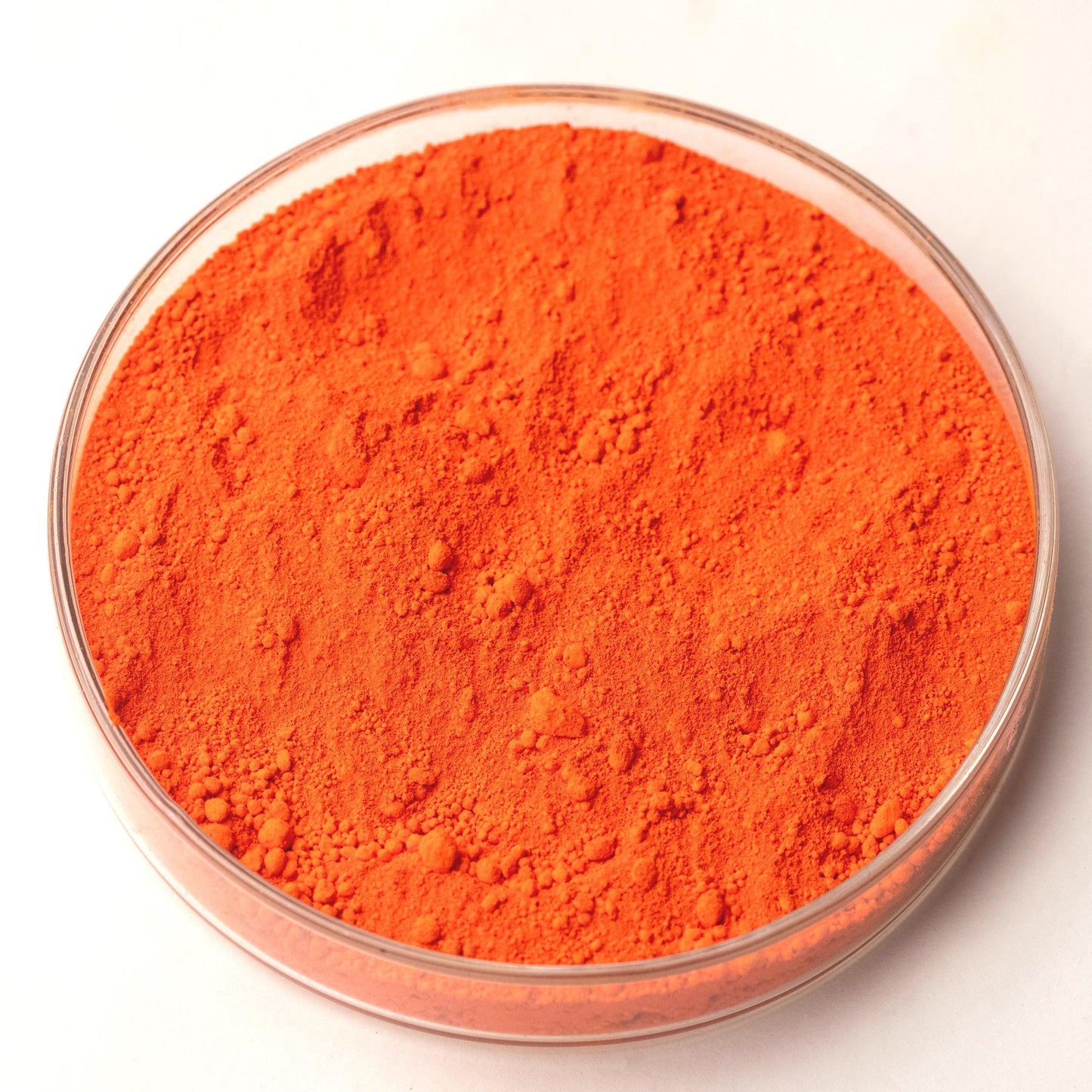Cadmium Orange
Cadmium Orange
Couldn't load pickup availability
Share

See Health Information
Description
Cadmium Orange is a vivid, opaque orange pigment produced by co-precipitating cadmium sulfide (CdS) with cadmium selenide (CdSe). Its hue ranges from bright tangerine to deep burnt orange depending on the ratio of sulfide to selenide. Known for its incredible intensity, opacity, and permanence, Cadmium Orange has been a cornerstone of the modern artist’s palette since the early 20th century.
It offers strong tinting strength, brilliant saturation, and smooth handling qualities. In watercolors, it granulates minimally and provides a strong, clean wash. In oils and acrylics, it delivers high covering power and mixes beautifully into warm reds and muted earth tones.
History
Cadmium pigments were first developed in the mid-19th century but became widely available to artists in the early 20th century. Cadmium Orange quickly gained popularity as a stable alternative to more fugitive organic oranges and the toxic but unstable Chrome Oranges (lead chromates).
It was particularly embraced by the Fauves, Impressionists, and Expressionists for its brilliance and strength. Artists such as Henri Matisse and Edvard Munch exploited its vibrant warmth in bold color compositions. Its permanence and opacity also made it favored in academic painting for underpainting and flesh tones.
Though expensive, Cadmium Orange became an essential modern pigment, prized both for its purity of color and archival stability.
Health and Safety
Warnings:
CANCER AGENT.
INHALATION MAY PRODUCE CANCER.
EXPOSURE MAY CAUSE HARM TO THE PREGNANT PEOPLE OR DEVELOPING FETUS.
INHALATION MAY CAUSE LUNG DAMAGE.
CONTAINS CADMIUM.
Precautions:
Keep out of reach of children and pets.
Do not consume.
Not for cosmetic or food usage.
Do not spray apply.
For further health information contact a poison control center.
Use care when handling dry pigments and avoid dust formation.
Use particular caution with fibrous, fine, or toxic pigments.
Do not eat, drink, or smoke near dry pigments.
Avoid breathing in pigment dust and use a NIOSH-certified dust respirator with sufficient rating for dry pigment.
Wash hands immediately after use or handling.
If dust is likely, always wear protective clothing to keep out of eyes, lungs, off skin, and out of any contact as well as keep area ventilated.
This product may contain chemicals known by the State of California to cause cancer, birth defects, or reproductive harm.
Warnings and bottle information are abbreviated.
Pigment Information
Pigment Type: Synthetic Inorganic
Chemical Composition: Cadmium Sulfide (CdS) with Cadmium Selenide (CdSe)
Suitable Mediums: Watercolor, Oil, Tempera, Acrylic, Encaustic
Lightfastness: Excellent
Opacity: Opaque
Other Names: Cadmium Sulfoselenide Orange, Permanent Orange, Cadmium Scarlet (for redder variants)
Color Index Code: PO20

